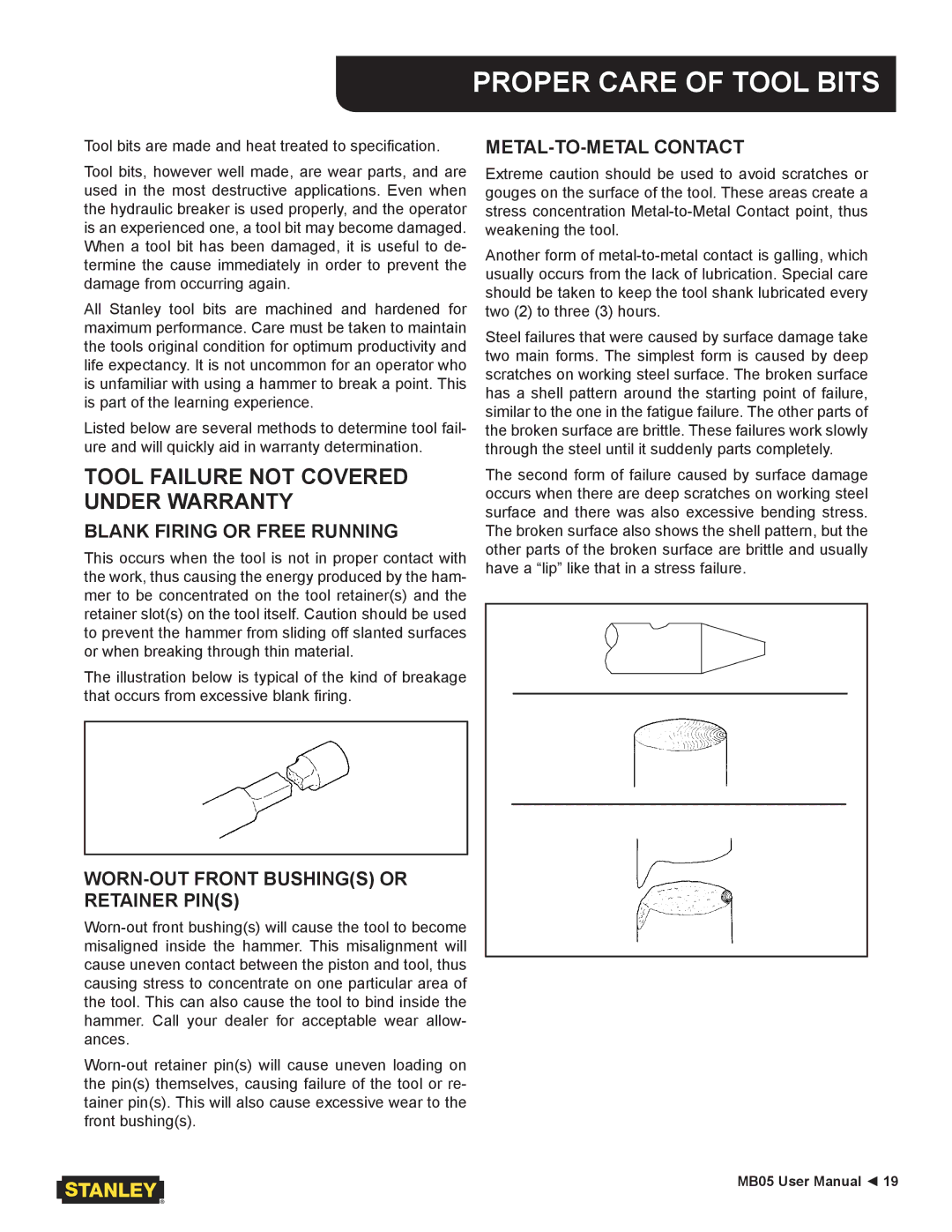MB05 specifications
The Stanley Black & Decker MB05 is a powerful and versatile tool that caters to the needs of professionals and DIY enthusiasts alike. Designed for robust performance, this model exemplifies the company’s commitment to innovation and quality.One of the main features of the MB05 is its sturdy construction, ensuring durability even in the most demanding work environments. The design incorporates high-quality materials that withstand heavy use, making it ideal for both industrial and residential applications. The ergonomic handle enhances comfort during prolonged use, reducing fatigue and improving user experience.
In terms of technology, the MB05 boasts a powerful motor capable of delivering high torque while maintaining efficiency. This motor enables the tool to handle a variety of tasks, from light-duty jobs to more intensive applications. Additionally, the MB05 is equipped with an advanced battery management system that provides excellent runtime and reduces charging time. The inclusion of lithium-ion battery technology further enhances performance by offering longer-lasting power and less downtime.
The MB05 features a versatile speed control mechanism, allowing users to adjust the tool's velocity according to the task at hand. This adaptability is particularly beneficial for users working on various materials, ensuring precise results every time. Moreover, the built-in LED light illuminates the work area, providing increased visibility in dimly lit spaces.
Another characteristic worth noting is the tool’s compatibility with a wide range of accessories. This versatility allows users to customize their experience and tackle diverse projects, from drilling to fastening. The quick-release chuck mechanism simplifies the process of changing accessories, saving valuable time and effort.
In summary, the Stanley Black & Decker MB05 is a robust and efficient tool designed for both professional and personal use. With its durable construction, powerful motor, advanced battery technology, adjustable speed control, and compatibility with various accessories, it represents a valuable addition to any toolbox. Users can rely on the MB05 to deliver exceptional performance and meet their diverse project needs effectively. With Stanley Black & Decker’s reputation for quality, the MB05 is an investment that promises reliability and satisfaction across various applications.

